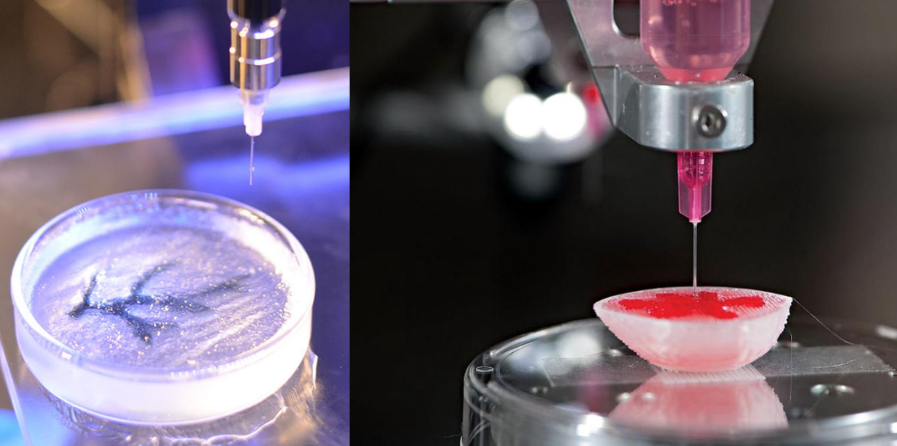Technology
CRISPR Technology Explained: Everything You Need to Know About It
Introduction to CRISPR Technology:
Clustered Regularly Interspaced Short Palindromic Repeats commonly known as CRISPR is a family of DNA sequences located in genomes of prokaryotic organisms such as archaea and bacteria. These sequences are derived from DNA fragments of bacteriophages that previously infected the prokaryotes. CRISPR is present in almost 90% of sequenced archaeal genomes and around 50% of sequenced bacterial genomes.
CRISPR technology is a revolutionary gene-editing technology that allows scientists to change ill genome sequences or disease genes with alternative and strong ones. It aims to treat and heal diseases in humans by interchanging weak cells with stronger ones. Though it has been used in human trials lately, many health professionals and scientists have condemned it for unethical usage.
What is CRISPR Cas9?
CRISPR is a microbial immunity technology that can transform healthcare practices by allowing researchers to edit weak genomes by eliminating, integrating, and changing the DNA sequence sections.
The associated proteins in CRISPR are known as CAS, which have multiple categories, including Cas9, the most influential one. It enables medical researchers and geneticists to edit weak genomes by eliminating, integrating, and changing the DNA sequence sections. Dr. Jennifer Doudna, known as the mother of this groundbreaking gene editing mechanism, states that CRISPR Cas9 has the potential to revolutionize genome modification procedures.
With age-long DNA studies, researchers could make a breakthrough in the genome editing field in 2012 with CRISPR. Its first human trial took place in October 2016 in China. However, there have been many debates on its integration among healthcare workers and national delegates.
The most significant concerns raised were human safety and mortality issues. There can be deadly reactive results after the genome editing process, as it changes the genetic DNA of an organism. However, research on the CRISPR mechanism is allowed in several regions to address complex health conditions and researchers expect the integration of this technology beyond the human body, such as farming, animals, food components, and others.
How Does CRISPR Technology Work?
CRISPR application is a scientific activity that follows the weak genome identification, cutting, and restoration procedure. Primarily, the weak DNA sequence that causes a disease in an organism is identified. Afterward, Cas9 is encoded with the DNA sequence that helps cut it and shut the disease gene off with the assistance of RNA. In a way, stronger genomes replace the disease genes to eliminate a disease impacting the human body.
With gradual progression, researchers made various upgrades to Cas9, which can integrate alternate genes without cutting and eliminating existing ones. CRISPR works as an adaptive immune system that not only identifies the genes that create diseases in human bodies but also transforms them into infection-preventive ones.
Apart from this, CRISPR has been applied in successful healthcare trials, showing positive results in conditions like blood disorders, cancer, genetic blindness, diabetes, chronic infection, HIV, and others.
Limitations of CRISPR Technology:
Though the introduction of CRISPR technology has transformed the treating and curing procedures of healthcare services, it also possesses certain limitations. Its entire clinical application depends on the successful restoration of target genomes with CRISPR Cas associate protein. However, the method can fail while transforming larger numbers of mature cells.
Along with that, the researchers are yet to prove the 100% accuracy of the CRISPR gene editing technology. In occasions of off-target gene edits, diverse situations can take place, risking the living organism. Moreover, its efficiency is also a question. If target cells do not possess genome editing ability, the CRISPR Cas integration can fail in that organism.
Future of CRISPR Cas Technology:
Different countries and global organizations have contributed to the research and development of CRISPR technology, among which, Germany, the USA, and China have been significant. With research, these nations have contributed timely and valuable literature on this mechanism.
Along with R&D, CRISPR technology studies have received significant funding and investments worldwide. Data states that investors have over five billion USD in this mechanism. The frontrunner of this gene editing technique, CRISPR Therapeutics, recently raised $38 million for further study in this field. Another biotech company from India named CrisprBits collected a fund of $250 thousand to develop the technology more. This gene editing technology can be a common practice in the upcoming years.
Follow us on LinkedIn - https://www.linkedin.com/company/xcellent-insights




